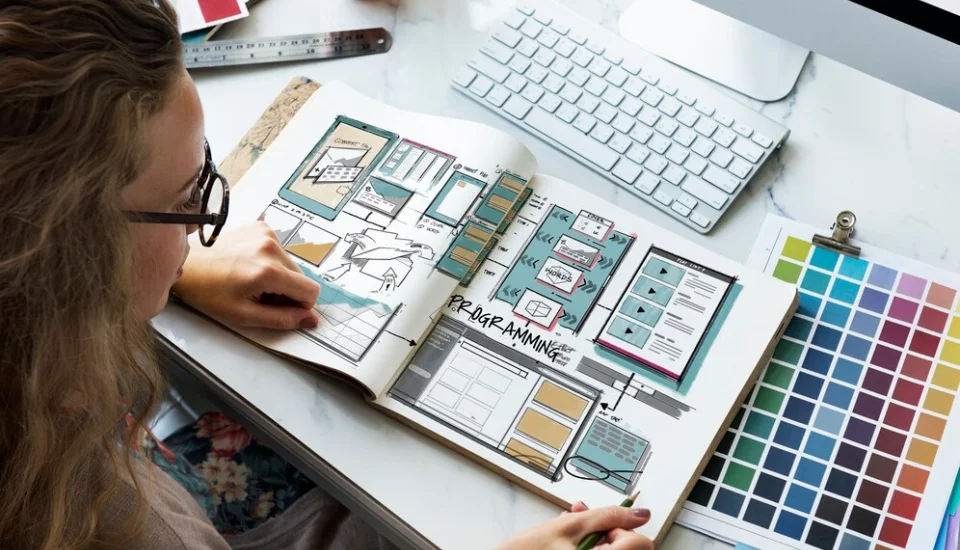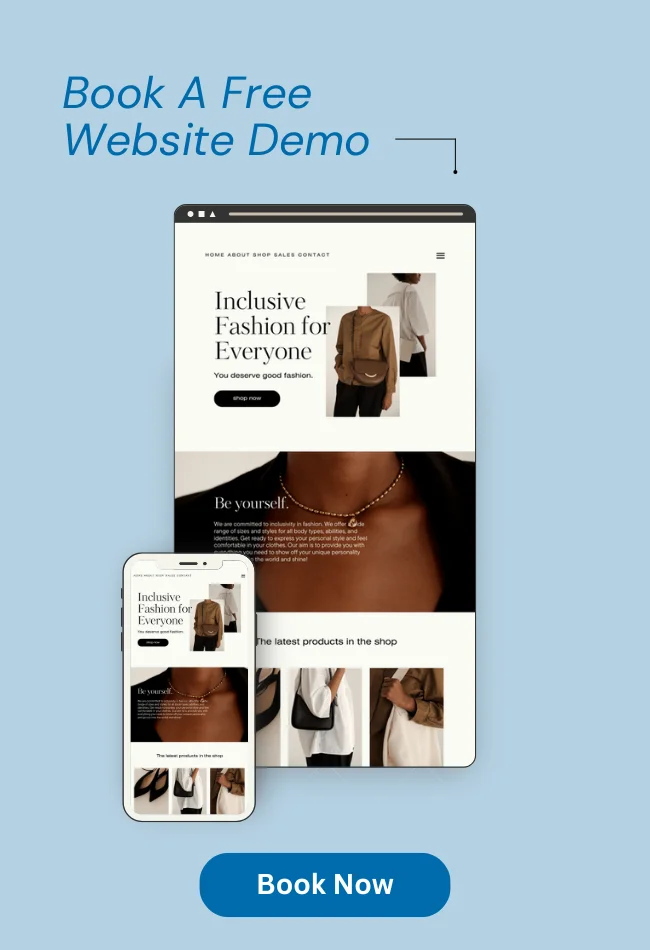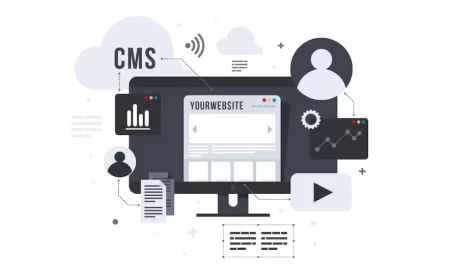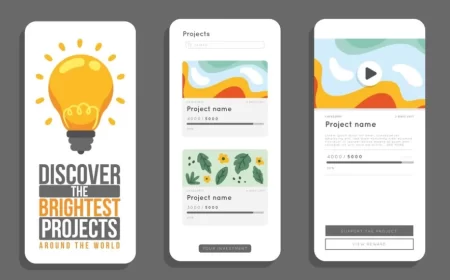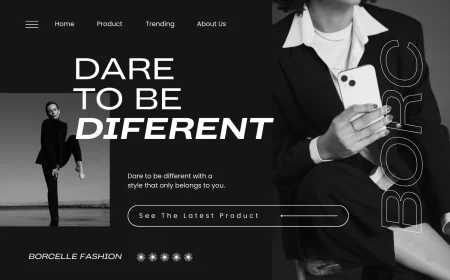The web design process is a structured, multi-faceted approach to creating a functional, aesthetically pleasing, and user-friendly website. It’s far more than just making things look good; it involves a strategic blend of understanding client needs, user behaviors, technical capabilities, and business objectives to deliver a digital product that achieves its goals. From initial ideation to launch and ongoing maintenance, a well-defined web design process ensures efficiency, reduces risks, and ultimately leads to a successful online presence.
This comprehensive guide will illuminate the typical stages involved in the web design process, providing a conceptual blueprint that can be adapted for various projects, from simple landing pages to complex e-commerce platforms. We’ll explore the core principles that govern effective web design, outline the key activities and deliverables within each phase, and discuss what makes a web design project truly successful. Whether you’re a budding designer, a business owner looking to build a new site, or simply curious about how great websites are crafted, understanding this process is fundamental to navigating the digital landscape.
What is the Web Design Process?
The web design process is a systematic series of steps that a designer or team follows to plan, create, and launch a website. It’s an iterative journey that typically involves research, planning, design, development, testing, and deployment, with continuous feedback loops. The primary goal is to build a website that:
- Meets Business Objectives: Achieves specific goals for the client (e.g., lead generation, sales, information dissemination).
- Satisfies User Needs: Is easy to use, intuitive, and provides value to its target audience.
- Is Aesthetically Pleasing: Has a professional and engaging visual design.
- Is Technically Sound: Is functional, secure, and performs well across devices.
Core Principles Guiding the Web Design Process
Effective web design is underpinned by several key principles that should be considered throughout the entire process:
- User-Centricity: Always design with the end-user in mind. Understand their needs, behaviors, and pain points.
- Clarity & Simplicity: Websites should be easy to understand and navigate. Avoid unnecessary clutter or complexity.
- Consistency: Maintain a consistent visual style, navigation patterns, and interaction behaviors across the entire site.
- Visual Hierarchy: Guide the user’s eye to the most important elements on the page through size, color, placement, and contrast.
- Responsiveness: Ensure the website adapts and looks great on all devices (desktops, tablets, smartphones).
- Performance: Websites should load quickly. Slow loading times lead to poor user experience and lower search rankings.
- Accessibility: Design for all users, including those with disabilities, by following guidelines like WCAG.
- Branding: The website should effectively communicate the client’s brand identity, values, and message.
Conceptualizing the Phases of the Web Design Process
While specific methodologies (e.g., Agile, Waterfall) may vary, most web design projects follow a similar set of conceptual phases. A common framework includes: Discovery, Planning, Design, Development, Testing & Launch, and Maintenance & Iteration.
Phase 1: Discovery (Research & Understanding)
This initial phase is about gathering all necessary information to understand the project’s scope, goals, and audience. It’s the “why” and “for whom.”
- Core Goal: To gain a deep understanding of the client’s business, target audience, project objectives, and competitive landscape.
- Key Questions:
- What is the primary purpose of this website?
- Who is the target audience? What are their demographics, needs, and behaviors?
- What are the client’s business goals (e.g., increase sales, generate leads, provide information)?
- Who are the main competitors, and what do their websites do well or poorly?
- What content will be needed?
- What are the technical requirements or limitations?
- Key Activities:
- Client Interviews/Briefing: Detailed discussions with the client to understand their vision, requirements, and expectations.
- Target Audience Research: User interviews, surveys, persona development, analytics review (for existing sites).
- Competitor Analysis: Analyzing direct and indirect competitors’ websites for features, design, and user experience.
- Content Audit/Strategy: For existing sites, evaluating current content; for new sites, planning content needs.
- Technical Requirements Gathering: Understanding hosting, platform, integrations, and security needs.
- Typical Deliverables:
- Project Brief / Scope Document
- Target Audience Personas
- Competitor Analysis Report
- Initial Content Strategy/Outline
Phase 2: Planning (Strategy & Structure)
Once the “why” is understood, this phase focuses on the “what” and “how”—structuring the website to meet the defined goals.
- Core Goal: To define the website’s structure, content organization, and user flows, creating a strategic blueprint for the design and development.
- Key Questions:
- How will users navigate the site?
- What is the logical flow of information?
- What content goes where?
- What features are essential for the Minimum Viable Product (MVP)?
- Key Activities:
- Information Architecture (IA) Design: Creating sitemaps to define the hierarchy and organization of website content.
- User Flow Mapping: Diagramming the paths users will take to complete key tasks on the website.
- Wireframing: Creating low-fidelity visual representations of page layouts, focusing on content placement and functionality, not aesthetics.
- Feature Prioritization: Deciding which features are most critical for the initial launch.
- Technology Stack Selection: Choosing the appropriate CMS, programming languages, databases, etc.
- Typical Deliverables:
- Sitemap (HTML and/or XML)
- User Flow Diagrams
- Wireframes (low-fidelity sketches or digital mockups)
- Functional Specifications / Feature List
Phase 3: Design (Visuals & User Experience)
This is where the website begins to take visual form, translating the wireframes and strategy into an engaging and intuitive user interface.
- Core Goal: To create the visual look and feel of the website, ensuring it is aesthetically pleasing, on-brand, and provides an optimal user experience.
- Key Questions:
- What will the website look like?
- How will the brand identity be conveyed visually?
- How will users interact with the interface?
- Does the design align with user needs and business goals?
- Key Activities:
- Mood Boards/Style Tiles: Exploring visual directions (colors, typography, imagery) to establish a design aesthetic.
- UI (User Interface) Design: Creating high-fidelity mockups of key pages, applying brand guidelines, color palettes, typography, and imagery.
- Prototyping: Building interactive models of the design to simulate user flows and test interactions before development.
- Feedback & Iteration: Presenting designs to the client for feedback and making necessary revisions.
- Content Integration (Initial): Placing actual content into the designs to see how it fits.
- Typical Deliverables:
- Visual Mockups (high-fidelity designs of key pages)
- Interactive Prototypes
- UI Style Guide / Design System (defining colors, fonts, components)
- Content for key pages (if provided by client)
Phase 4: Development (Building the Website)
In this phase, the approved designs are transformed into a functional, live website using code.
- Core Goal: To code the website according to the approved designs and functional specifications, ensuring it is robust, responsive, and performs well.
- Key Questions:
- How will the design be translated into code?
- Is the website responsive across devices?
- Are all features functioning correctly?
- Is the code clean, efficient, and secure?
- Key Activities:
- Front-End Development: Coding the visual and interactive elements (HTML, CSS, JavaScript).
- Back-End Development: Building server-side logic, databases, and integrations (if dynamic content or specific functionalities are required).
- CMS Integration: Setting up and customizing the Content Management System (e.g., WordPress, Shopify).
- Database Setup: Creating and configuring databases.
- Content Population: Adding all final website content (text, images, videos).
- Typical Deliverables:
- Developed Website (staging environment)
- Functional Features
- Content Management System Setup
Phase 5: Testing & Launch (Quality Assurance & Deployment)
Before going live, the website undergoes rigorous testing to ensure everything works perfectly.
- Core Goal: To thoroughly test the website for functionality, usability, performance, and compatibility, and then deploy it to a live server.
- Key Questions:
- Does everything work as expected?
- Is the website fast and secure?
- Is it accessible to all users?
- Is it ready for public viewing?
- Key Activities:
- Functional Testing: Testing all links, forms, buttons, and interactive elements.
- Usability Testing: Observing real users interacting with the website to identify pain points.
- Performance Testing: Checking page load times and overall site speed.
- Cross-Browser/Device Testing: Ensuring compatibility across different browsers and screen sizes.
- SEO Audit: Final check of meta tags, alt text, sitemaps, and basic SEO elements.
- Security Testing: Identifying and patching any vulnerabilities.
- Client Review & Approval: Final sign-off from the client.
- Deployment: Migrating the website from the staging environment to the live server.
- Typical Deliverables:
- Testing Reports / Bug Lists
- Launch Checklist
- Live Website
Phase 6: Maintenance & Iteration (Ongoing Optimization)
The launch is not the end; it’s the beginning of continuous improvement.
- Core Goal: To ensure the website remains secure, up-to-date, and continues to perform optimally, evolving based on user feedback and analytics.
- Key Questions:
- How is the website performing post-launch?
- Are users engaging as expected?
- What new features or improvements are needed?
- Are there any security vulnerabilities?
- Key Activities:
- Analytics Monitoring: Tracking user behavior, traffic, conversion rates, and other KPIs.
- User Feedback Collection: Surveys, heatmaps, session recordings, direct feedback.
- Security Updates: Applying patches and monitoring for threats.
- Software Updates: Keeping CMS, plugins, and frameworks up-to-date.
- Content Updates: Regularly refreshing text, images, and blog posts.
- A/B Testing: Experimenting with different design elements or content to optimize performance.
- Feature Enhancements: Planning and implementing new features based on data and feedback.
- Typical Deliverables:
- Performance Reports
- Maintenance Plans
- Feature Roadmaps / Backlog Updates
What Makes a Web Design Process Successful?
Beyond simply following steps, a successful web design process is characterized by:
- Clear Communication: Constant, transparent communication between the design team and the client.
- Collaboration: Active involvement from all stakeholders, including the client, designers, developers, and content creators.
- Flexibility & Adaptability: Being able to adjust to new information, changing requirements, and unexpected challenges.
- User-Centric Focus: Keeping the end-user’s needs at the forefront of every decision.
- Defined Goals & Metrics: Knowing what success looks like from the outset and measuring against it.
- Iterative Approach: Embracing feedback and continuous refinement.
- Quality Assurance: Thorough testing at every stage.
Conclusion
The web design process is a comprehensive journey that transforms ideas into functional, beautiful, and effective digital experiences. It’s a strategic blend of creativity, technical expertise, and a deep understanding of human behavior. By diligently navigating through the phases of discovery, planning, design, development, testing, and ongoing maintenance, web designers and clients can collaborate to build websites that not only look great but also achieve measurable business goals and provide exceptional value to their users. This structured approach is the blueprint for crafting a successful and sustainable online presence in an ever-evolving digital world.
Frequently Asked Questions (FAQs)
Q1: What is the most important phase in the web design process?
While all phases are crucial, the Discovery (Research) and Planning (Strategy & Structure) phases are arguably the most important. A thorough understanding of the client’s goals and the target audience, combined with a solid information architecture and user flow, lays the foundation for a successful website. Skipping or rushing these can lead to costly revisions later.
Q2: How long does the web design process typically take?
The duration varies widely based on the complexity and scope of the website.
- A simple landing page might take 1-3 weeks.
- A small business website with a few pages could take 4-8 weeks.
- A medium-sized website with custom features might take 3-6 months.
- Large e-commerce sites or complex web applications can take 6 months to a year or more of ongoing development.
Q3: What is the difference between wireframes and mockups?
- Wireframes: Are low-fidelity blueprints of a web page. They focus on the structure, layout, content placement, and functionality, using simple shapes and grayscale. They are about what goes where.
- Mockups: Are high-fidelity visual designs of a web page. They incorporate colors, typography, imagery, and detailed UI elements, showing what the final design will look like.
Q4: Why is “mobile-first” design important in the web design process?
Mobile-first design means designing the website for mobile devices first, then scaling up to tablets and desktops. It’s important because:
- Dominant Traffic: A significant portion of web traffic comes from mobile devices.
- Constraint-Led Design: Designing for smaller screens forces designers to prioritize content and features, leading to a cleaner, more focused experience.
- Better User Experience: Ensures the website is accessible and usable on the go, where user needs and contexts differ.
Q5: What is SEO, and how does it fit into web design?
SEO (Search Engine Optimization) is the practice of increasing the quantity and quality of traffic to your website through organic search engine results. It fits into the web design process from the very beginning:
- Discovery: Keyword research informs content strategy.
- Planning: Information architecture and URL structure are optimized for SEO.
- Design: Fast loading times, mobile responsiveness, and clear visual hierarchy are SEO factors.
- Development: Clean code, proper HTML tags, and sitemap generation are crucial.
- Maintenance: Ongoing content updates and performance monitoring are key for sustained SEO.
Q6: How much does a website typically cost?
Website costs vary enormously based on complexity, features, and who builds it.
- Basic DIY (Website Builder): $10-$50/month (plus domain).
- Small Business Website (Freelancer/Small Agency): $2,000 – $10,000+.
- Medium-Sized Custom Website: $10,000 – $50,000+.
- Large E-commerce / Complex Web App: $50,000 – $250,000+ (and often much more). Costs are influenced by custom design, complex features, integrations, and ongoing maintenance.
Q7: Why is testing so crucial before launching a website?
Testing is crucial because it helps to:
- Identify Bugs & Errors: Catch and fix functional issues before they impact live users.
- Ensure Usability: Validate that users can easily navigate and complete tasks.
- Verify Responsiveness: Confirm the site looks and functions correctly across all devices and browsers.
- Optimize Performance: Identify and resolve slow loading times.
- Protect Reputation: A bug-free, user-friendly site enhances credibility and provides a positive first impression.
- Reduce Post-Launch Costs: Fixing issues before launch is significantly cheaper than after.

